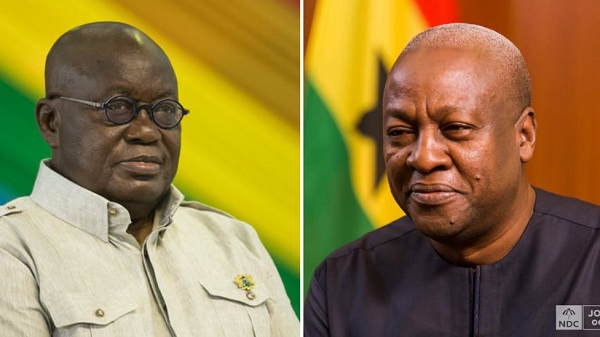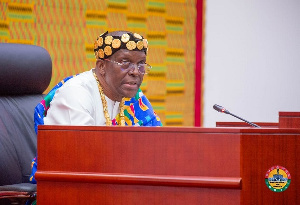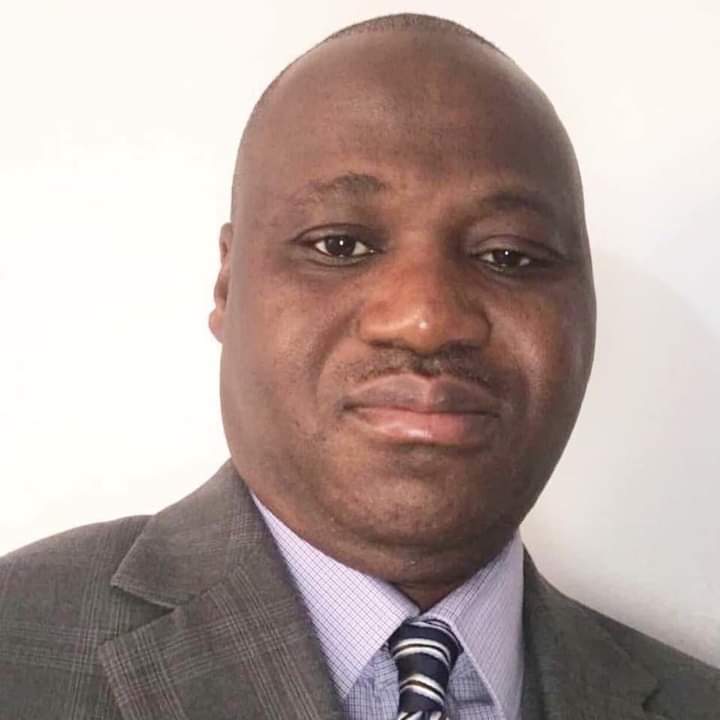Here’s why Akufo Addo’s records of economic growth better than Mahama – IPG

The Institute of Progressive Governance (IPG) has emphasized that President Akufo-Addo’s performance in economic growth far outweighs that of the John Mahama-led administration.
In a statement issued by the think tank and made available to the press, IPG has not only provided detailed data about the economic performances of the two regimes but has also looked at the growth rates of all past governments since 1992.
“President Mahama’s first year in office as the president in 2013 saw the economy growing at 7.24%. Unfortunately, the Ghanaian economy started showing signs of distress attributable to several factors, including debt unsustainability, severe draught and its accompanying unrestrained power outages (dumsor). These developments adversely affected agricultural production and the manufacturing sector. The economy grew at 2.86% in 2014 and further down to 2.12% in 2015%,” portions of the statement said.
“However, things started to improve and in 2016, the economy picked up and grew at 3.37%. The average economic growth rate under President Mahama was therefore 3.90%, the worst average economic growth rate in the 4th Republic for any term of a government” portions of the statement said.
The Ghanaian economy has been growing positively since 1983! The economic growth has been better since 1993 when the country was ushered into democracy – growing at an average rate of 5.3% (Bank of Ghana, 2024).
During the first term of office of Rawlings, the first president of the 4th Republic, the economy grew at an average rate of 4.21%. While such a performance was below average, Rawlings’ second term of office could only manage a marginal improvement of an average growth rate of 4.26%, according to IPG.
President Kufour, according to the think tank, picked the economy growing at 3.73% in 2000 and left it at 9.0% in 2008. This represents an average growth rate of 5.80%.
Kufour’s performance in terms of economic growth was far above average! It was thus not surprising that after rebasing the Ghanaian economy in 2010, it came out that Ghana had been a lower middle-income country since 2007.
The Institute of Progressive Governance also noted that while there was a sudden drop in economic growth to 5.68% in 2009, immediately after oil production in commercial quantities in 2011, the growth bounced back hitting 13.95%, the highest-ever economic growth rate recorded by the country.
Prof. Evans Fiifi Atta-Mills, therefore, achieved an enviable record of growing the economy at an average growth rate of 8.96%. It must be emphasized that he died almost 7 months into his last year in office (24th July 2012) and his Vice President, John Dramani Mahama became president for the remaining 5 months.
“President Mahama’s first year in office as the president in 2013 saw the economy growing at 7.24%. Unfortunately, the Ghanaian economy started showing signs of distress attributable to several factors, including; debt unsustainability, severe draught and its accompanying unrestrained power outages (dumsor).”
“These developments adversely affected agricultural production and the manufacturing sector. The economy grew at 2.86% in 2014 and further down to 2.12% in 2015%. However, things started to improve and in 2016, the economy picked up and grew at 3.37%. The average economic growth rate under President Mahama was therefore 3.90%, the worst average economic growth rate in the 4th Republic for any term of a government,” IPG emphasized.
“President Akufo-Addo’s economy grew at 8.13% in 2017. However, the main driver of this growth rate was the expansion in oil production. During the era of President Mahama, several efforts were put in place to expand oil production. Therefore, the projection was that the Ghanaian economy would grow impressively in 2017. Indeed, without the oil, the economy would have grown at 4.63% in 2017. However, discounting the oil effect, the Ghanaian economy grew impressively at 6.05% in 2018 and 5.83% in 2019. The overall growth rate (oil and non-oil) of 6.20% in 2017, 6.51% in 2019 and 0.51% in 2020 means that the Ghanaian economy grew at an average rate of 5.34% during Akufo Addo’s first term. This is above average and far better than President Mahama’s average growth of 3.90%” it further emphasized.
President Akufo Addo, the statement by IPG noted, started his second term in 2021 at the time the economy had started recovering from the COVID-19 pandemic. The economic growth rate of 5.36% in 2021 was therefore seen as a turning point.
Unfortunately, the recovery could not be sustained and in the year 2022, the economy suffered severe jolts to grow at 3.08%.
Exchange rate volatility and unbridled escalating inflation did not spare the growth of the economy.
The worst was yet to happen to the growth when in May 2023 the country subscribed to an extended credit facility programme with the IMF and expenditure had to be cut drastically.
The economy grew at 2.90% in 2023 against a 1.5% forecast by the IMF. The economy however has picked up growing at 4.7% during the first quarter of 2024.
This provides the hope that Akufo Addo’s second term’s average economic growth rate is likely to be higher than President Mahama’s record lowest terminal average growth of 3.90%.
IPG is an economic think tank with a motivation to provide economic education to Ghanaians. IPG used data from the Bank of Ghana to assess performance from the perspective of economic growth for all governments in the 4th Republic.
Below are the data detailing the performances of the economy over the past three decades:


Source: P K Sarpong, Contributo





